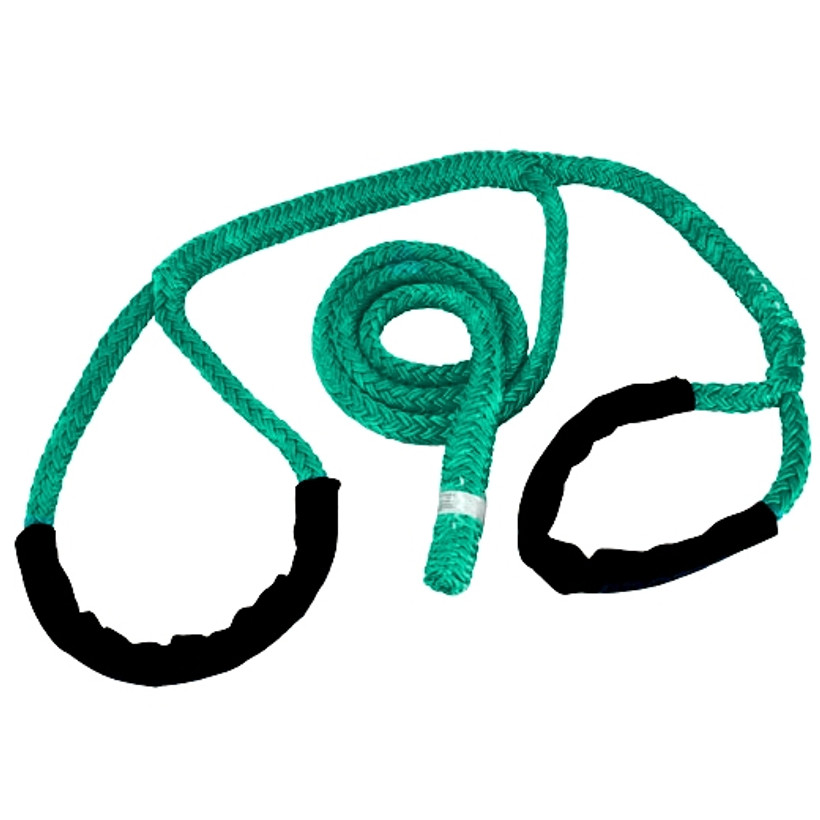Rigging Slings
When you're doing tree work, slings are essential. Without them, much of the important tree rigging, climbing, and tree removal that needs to be done is impossible. There are plenty of different options available, and it can get a bit difficult to wade through them. Before purchasing your next rigging slings/rigging straps, learn about some of the different options available!
What Is a Rigging Sling?
Rigging slings are excellent items when working high in a tree. Whether you have chain slings or wire rope slings, these lifting slings provide a way to raise tools in the air. There are many options - mesh slings, synthetic lifting slings, synthetic rigging slings, alloy chain slings, polyester sling options, and more.
A rigging sling makes your life easier when working high up in a tree. It's critical to select the best material for handling your tools. Let's examine a few of the most common choices next to help you make the best choice for your life.
Material Matters with Lifting Slings
Slings are made from a number of different materials. Each type of material provides its own distinct advantages and disadvantages. Learn about some of the popular ones below.
Wire Rope Slings
These are sometimes called wire cable slings. They're more robust and durable than nylon slings, and have higher temperature tolerances. Some wire rope slings can withstand temperatures up to 400 degrees.
Chain Slings
These are meant for the heaviest duty loads, and the ones that are irregular in shape. Chains are often made from alloy steel, meaning that they can provide safety with large loads during tree removal.
(Web Slings) Polyester Slings and Nylon Slings
Polyester and nylon slings are the most cost effective options. They provide strength and durability in most cases, and can be made into custom slings on the fly. These are often referred to as web slings, as both materials are considered webbing.
Different Kinds of Slings
A lifting sling is a fast and simple tool for getting things to and from the ground. However, there are different kinds of slings available for tree work, as well as different lifting applications. Learn about the four most common slings used for tree work below.
Tubular Loop Slings
Also referred to as an endless loop. These are almost always a nylon web sling, with the occasional few being polyester web slings. These are easily girth hitched around limbs as a rigging redirect. Rigging gear like this should be kept separate from climbing gear, as it's easy to get the two confused from time to time.
Dead Eye Slings
Dead eye slings are unique in their construction. These are slings that have one end with a dead eye spliced into it. They range from 8 to 30 feet in length, and are used in both climbing and ground work applications. Dead eye slings are meant to reduce slop in your rigging system. They do this by being cinched tightly to the tree you're working in.
Loopie Slings
Like the name implies, loopie slings are rigging slings that are just loops. These are primarily used in the air. The construction of a loopie sling consists of a hollow braid loop that's spliced through itself. This allows it to tighten down on itself as it's passed through.
Whoopie Slings
The whoopie sling is where adjustability meets rigging redirect. They are a cross between the dead eye sling and the loopie sling. These are one large loop that's adjusted by sliding a smaller loop through it. This smaller loop is the dead eye. Whoopie slings are best used for ground work, however. Keep other slings in the air.
We've Got the Rigging Slings You Need
When you're looking for your next set of rigging slings, be sure to check out our selection. We back the products that we carry, and we can help you find the perfect rigging solution for your next job. If you've got any questions about rigging, or tree work at all, reach out to us! We'd love to assist you with all of your tree work needs. Until then, safe climbing!








